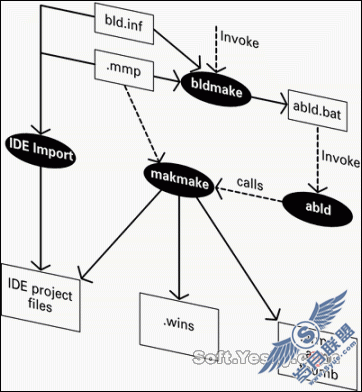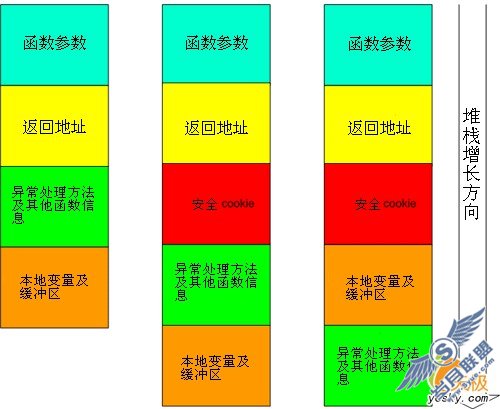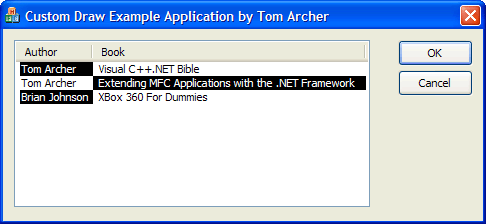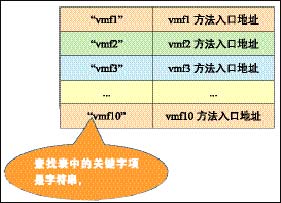C++学习-类和对象(2)
类(class)是C++面向对象程序设计的核心,它是实现抽象类型的工具。类是通过抽象数据类型的方法来实现的一种数据类型。类是对某一类对象的抽象,而对象是某一种类的实例。
本文稍微说一下类和对象的基本使用,比较简单也是最基本的C++基础。
一. 类
类的定义有2个部分:声明部分和实现部分。
声明部分:用来声明类中的数据成员和成员函数(方法)。 ->告诉用户"干什么?"。
实现部分:用来对成员函数的定义。 ->告诉用户"怎么干"。
二. 类的关键字
1.public
公有成员,在程序的任何地方都可以被访问。
2.private
私有成员,只能被成员函数和类的友元访问。
3.protected
保护成员,用于继承中。
三. 类的声明
下面只提供最简单的类声明,因为一个真正的类,还会涉及到很多性质或者特点。
本实验是在Code::Blocks工具中进行的,为了规范性,这里总共创建了3个源文件:main.cpp test1.cpp test1.h
main.cpp: 主程序
test1.cpp: test1.h头文件中的类的定义
test1.h: 类的声明
[cpp] //test1.h
#ifndef TEST1_H_INCLUDED
#define TEST1_H_INCLUDED
class CAnimal
{
public:
int getAge();
void setAge(int age);
void addAge();
private:
int mAge;
};
#endif // TEST1_H_INCLUDED
//test1.h
#ifndef TEST1_H_INCLUDED
#define TEST1_H_INCLUDED
class CAnimal
{
public:
int getAge();
void setAge(int age);
void addAge();
private:
int mAge;
};
#endif // TEST1_H_INCLUDED
四. 类的定义
当类的成员函数的函数体在类的外部定义时,必须由作用域运算符"::"来通知编译系统该函数所属的类。
[cpp] //test1.cpp
#include "test1.h"
int CAnimal::getAge()
{
return mAge;
}
void CAnimal::addAge()
{
mAge++;
}
void CAnimal::setAge(int age)
{
mAge = age;
}
//test1.cpp
#include "test1.h"
int CAnimal::getAge()
{
return mAge;
}
void CAnimal::addAge()
{
mAge++;
}
void CAnimal::setAge(int age)
{
mAge = age;
}
五. 对象的定义
CAnimal类的概念已经创建出来,现在就要实例化出一只动物,这里就用阿猫阿狗来举例。以下用2种方式来实例化对象:
1.CAnimal dog; //创建出了一只dog
2.CAnimal *cat = new CAnimal; //动态创建了一只cat
以下贴出使用dog和cat的具体操作:
[cpp] //main.cpp
#include <iostream>
#include "test1.h"
using namespace std;
int main()
{
//dog
CAnimal dog;
dog.setAge(12);
cout << "Dog is " << dog.getAge() << " years old." << endl;
cout << "After one year." << endl;
dog.addAge();
cout << "Dog is " << dog.getAge() << " years old." << endl;
//cat
CAnimal *cat = new CAnimal;
cat->setAge(12);
cout << "Cat is " << cat->getAge() << " years old." << endl;
cout << "After one year." << endl;
cat->addAge();
cout << "Cat is " << cat->getAge() << " years old." << endl;
return 0;
}
//main.cpp
#include <iostream>
#include "test1.h"
using namespace std;
int main()
{
//dog
CAnimal dog;
dog.setAge(12);
cout << "Dog is " << dog.getAge() << " years old." << endl;
cout << "After one year." << endl;
dog.addAge();
cout << "Dog is " << dog.getAge() << " years old." << endl;
//cat
CAnimal *cat = new CAnimal;
cat->setAge(12);
cout << "Cat is " << cat->getAge() << " years old." << endl;
cout << "After one year." << endl;
cat->addAge();
cout << "Cat is " << cat->getAge() << " years old." << endl;
return 0;
}
六. 程序运行结果
[plain] Dog is 12 years old.
After one year.
Dog is 13 years old.
Cat is 12 years old.
After one year.
Cat is 13 years old.
Dog is 12 years old.
After one year.
Dog is 13 years old.
Cat is 12 years old.
After one year.
Cat is 13 years old.
七. C++中class与struct的区别
在C++面向对象语言中,class和struct的功能很相似,struct也是一种类。
区别:
一个struct也是一个class,但是struct的默认方式是公用部分,而class的默认方式是私用部分。
以下使用代码说明,下面的class与struct是等价的:
[cpp] class:
class CAnimal
{
//默认是private
int mAge;
public:
int getAge();
void setAge(int age);
void addAge();
};
<=>
struct:
struct CAnimal
{
//默认是public
int getAge();
void setAge(int age);
void addAge();
private:
int mAge;
};
class:
class CAnimal
{
//默认是private
int mAge;
public:
int getAge();
void setAge(int age);
void addAge();
};
<=>
struct:
struct CAnimal
{
//默认是public
int getAge();
void setAge(int age);
void addAge();
private:
int mAge;
};
八. 为什么类的定义以分号结束
这是什么问题?有人说我很无聊。
其实并不单单类的定义要以分号结束,C++中的struct也要以分号结束。原因很简单,因为咱们的使用习惯,或者说是编译器编译程序要考虑的情况,在定义之后,可以接一个对象的定义列表,理所当然要以分号结束。
看几个简单的例子:
1.class
[cpp] class CAnimal
{
//...
}dog, cat;
class CAnimal
{
//...
}dog, cat;
2.struct
[cpp] struct CAnimal
{
//...
}dog, cat;
struct CAnimal
{
//...
}dog, cat;
3.int a, b, c; //O(∩_∩)O哈哈~
本博文是非常基础的,由简单循序渐进到复杂,这样才能培养出兴趣与恒心!
摘自 gzshun的专栏




